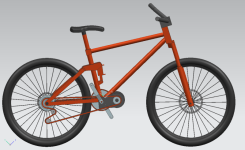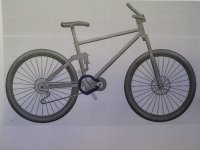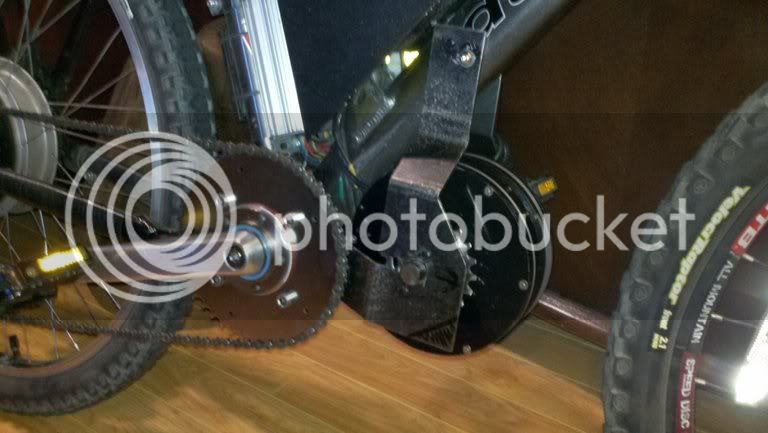BMC, I was PM'd by Ilia at ebikessf.com, and the loaded speed of their two Kvs using 26" wheel at 50V is 27-MPH and 30-MPH, soooo...wheel RPMs would then be: 349-RPMs for "torque" model, and 388-RPMs for the "Cruiser" model.
Add about 15% for unloaded speed (wheel in the air, all numbers approximate) shell RPMs are 401 and 446 @ 50V, so 5:1 reduction means motor RPMs are 2005 and 2230...Kv is roughly 40 and 44...very similar to MAC 10T and 8T
It appears the BMC with thinner laminations (
0.35mm on BMC vs
0.50mm on Bafang/MAC...28% improvement) can take almost double the RPM's before it begins making significant eddy-current waste-heat (I think the curve is squared instead of linear?). I still have a lot to learn. I will post corrections and new info as soon as I can. Any assistance with eddy-currents and waste-heat efficiency curves appreciated (ES is very big, sometimes difficult to find the answer to a question that is new to me).
xxxxxxxxxxxxxxxxxxxxxxxxxxxxxxxxxxxxxxxxxxxxxxxxxxxxxxxxxxxxxxxxxxxx
As far as using the
MAC as a geared hub to convert, there is a chance the only acceptable version are the 10T/12T when using 36V, and the 12T only when using 44V/48V.
At
36V, 10T motor-RPM is 1275, 12T is 1,000 At
48V, 12T is 1,300-RPM
A 1,300-RPM motor that is geared to pull a bike at 10-MPH in low gear will be a very good hill-climber, when compared to a one-speed motor that is spinning at wheel-RPMs, for example, at 10-MPH a 26-inch wheel is turning
129-RPM, a slow-winding Direct-Drive hub (9C, etc) has the copper mass to absorb and shed a lot of heat on a slow uphill, but adding gears to a motors output will keep the motor-RPMs high and in the middle of its efficiency range so we can avoid making most of that waste heat in the first place. An internally-geared hub (MAC, BMC, Bafang) will spin the motor 5 times the speed of the wheel, but at
low wheel speeds, the motor-RPMs are still too low for best performance, and the copper mass is much less than the common DD-hubs.
xxxxxxxxxxxxxxxxxxxxxxxxxxxxxxxxxxxxxxxxxxxxxxxxxxxxxxxxxxx
edit: because Bafang motor has only 16 poles (8 pole-pairs) they can run twice the RPMs as the MAC even though they have the less-desireable thicker 0.50mm laminations. Good news, the bare motor can be bought for less than $130 (I have no experience with this vendor)
greenbikekit.com has Bafang (at 36V they have 216-RPM and 312-RPM) for
$124
http://www.greenbikekit.com/index.php/electric-motor/bldc-bpm-500w-36v.html






